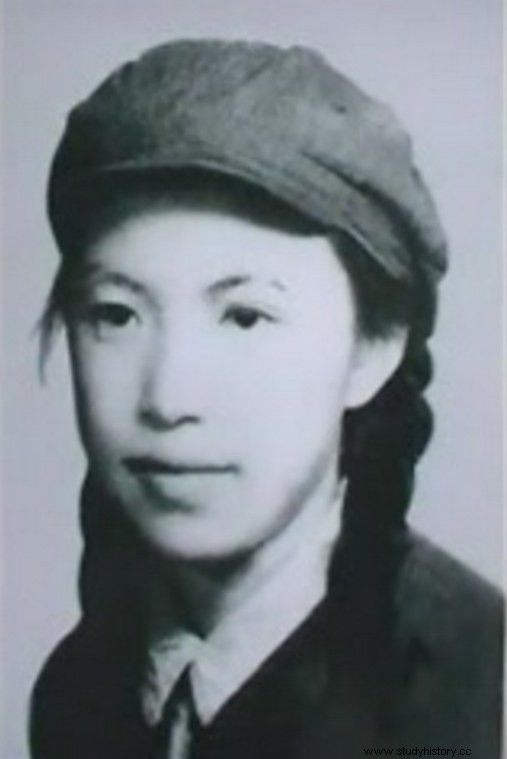Chinese woman of letters, Lin Zhao (1932 – 1968) was an activist for the Chinese Communist Party before opposing its abuses and becoming one of its opponents.
Fervent communist activist

Born in Suzhou (eastern China) on December 16, 1931, Peng Linzhao grew up there in a bourgeois family. From the age of 16, before the advent of the People's Republic of China, the young girl joined an underground communist cell, within which she wrote articles criticizing the corruption within the government of the Republic of China; she signs them with Lin Zhao's name. At age 17, three months before Mao Zedong proclaimed the founding of the People's Republic of China (PRC), Lin Zhao ran away from home to attend the Party journalism school.
In 1950, Lin Zhao participated in the Chinese land reform movement, which redistributed land to peasants with the massacre or expropriation of landowners. The estimate of the number of victims fluctuates between 1 and 3 million; officially, about 300 million peasants would have received 47 million hectares of land. Committed to the cause, Lin Zhao got involved in the movement with great fervor. In letters, she indicates that she is not afraid of being killed or of executing someone, and participates in or witnesses scenes of torture or execution.
Party Opponent
From fervent militant, Lin Zhao will however gradually become an opponent of the Party. In 1957, noting a weakening of his power within the Party and a fracture between the latter and the population, Mao Zedong launched the Hundred Flowers campaign, ostensibly promoting freedom of expression and allowing criticism in order to carry out a "rectification" campaign. Quickly, the protest exploded, and a great period of repression ensued. During the anti-rightist campaign, hundreds of thousands of intellectuals and political opponents were persecuted, arrested, deported and even executed.
Lin Zhao, then working in the Chinese literature department at Peking University, spoke out against the abuses of the anti-rightist campaign. In retaliation, she loses her job at the university and is assigned to sort old newspapers in a library. There she meets Gan Cui, a victim of the anti-rightist campaign. The two have a relationship, and in 1959, Gan Cui requests the same work assignment as Lin Zhao. He does not get it, but is sent to a laogai, a "re-education through labor" camp, from which he will return 20 years later.
The Great Famine
More than ever, Lin Zhao opposes Party policy. In 1960, China was struck by a great famine, which caused between 15 and 55 million deaths, due in particular to measures of the Great Leap Forward policy, an intense development movement initiated the previous year:reallocation of peasants to the production of iron and steel, eradication of sparrows, densification of crops, modification of agricultural techniques...
That year, Lin Zhao stayed in Shanghai for medical reasons. With other opponents, she founded the review Xinghuo , in which she points the finger at the responsibility of the government in the great famine in progress. Arrested in October, she refuses to deny her words and is sentenced to 20 years in prison.
In jail
In detention, Lin Zhao is beaten and tortured. Always determined to defend her convictions, she devoted herself to writing. Since she has no ink or pen, she uses hairpins and writes with her own blood, until she gets something to write on. She denounces the mistreatment she suffers, criticizes Mao Zedong's policy, proposes reforms. Analyzing her past, she accuses the Chinese Communist Party of having abused the idealism of her generation.
As early as 1966, a report recommended the execution of Lin Zhao because of her strong political positions and the turmoil she was accused of causing within the prison. In April 1968, she was finally sentenced to death, and executed the same day. His mother and sister learned of his death two days later, when a policeman came to demand reimbursement of half a yuan for the bullet used in the execution.
Lin Zhao would be rehabilitated in 1981. She is now widely considered a martyr.
